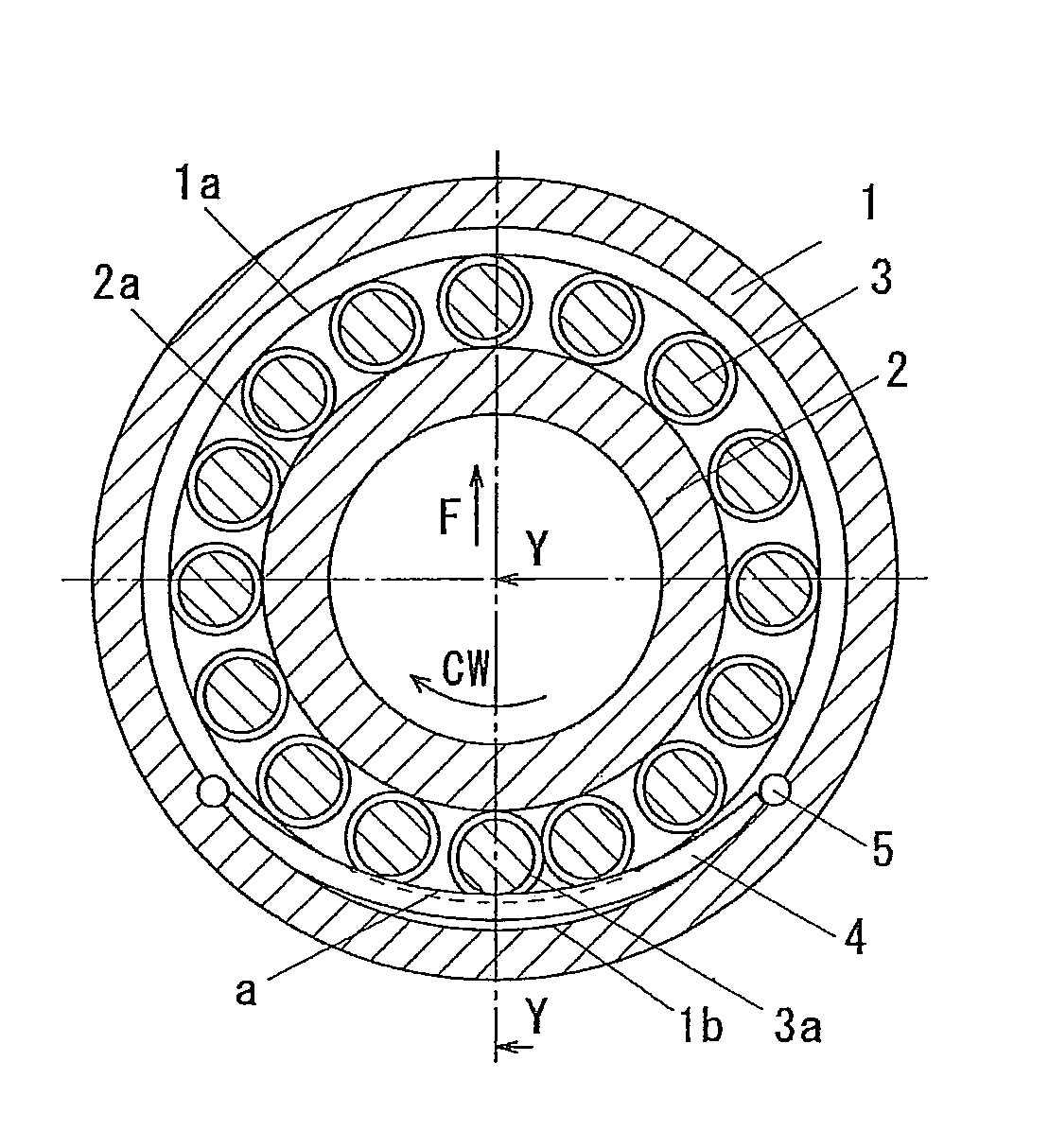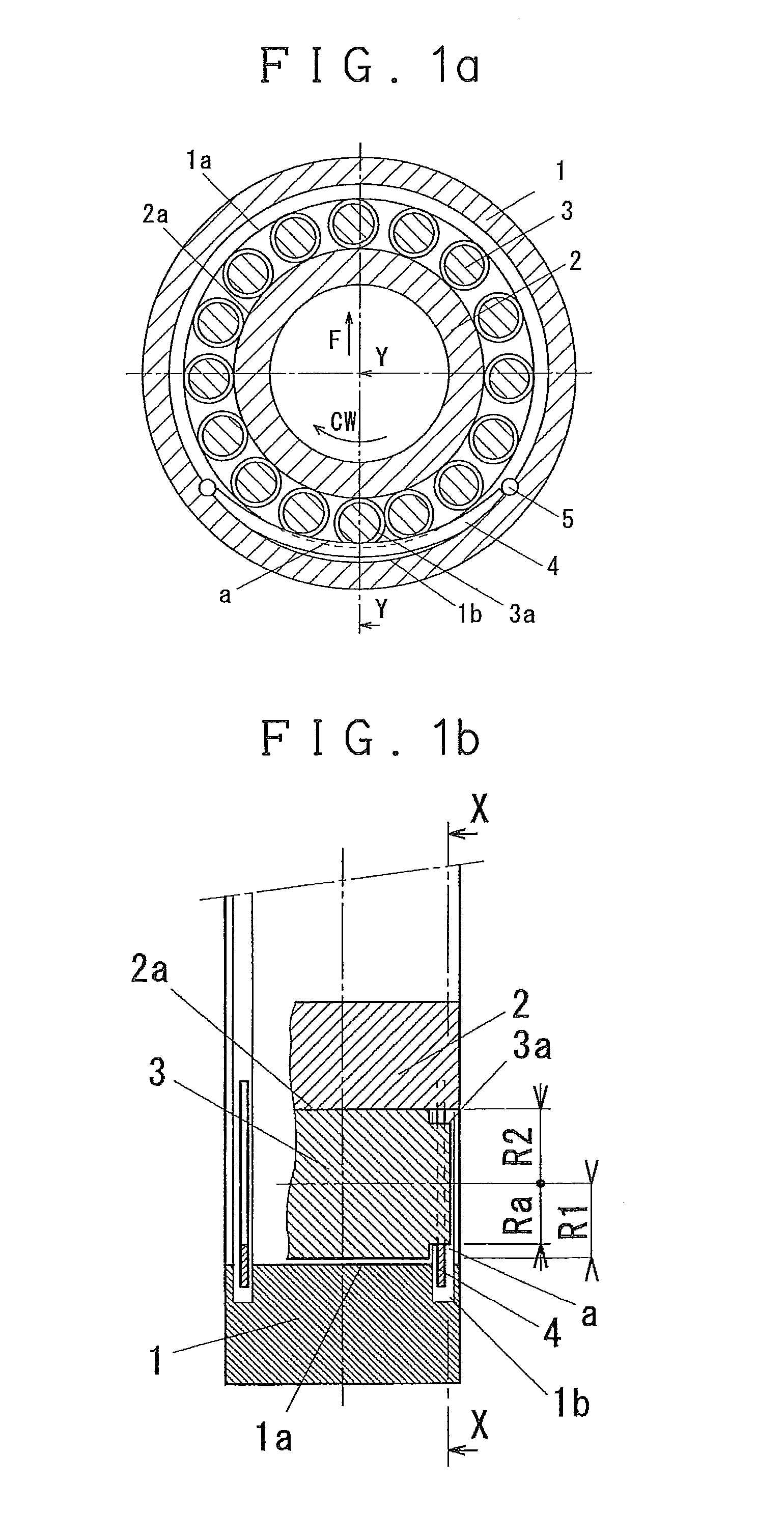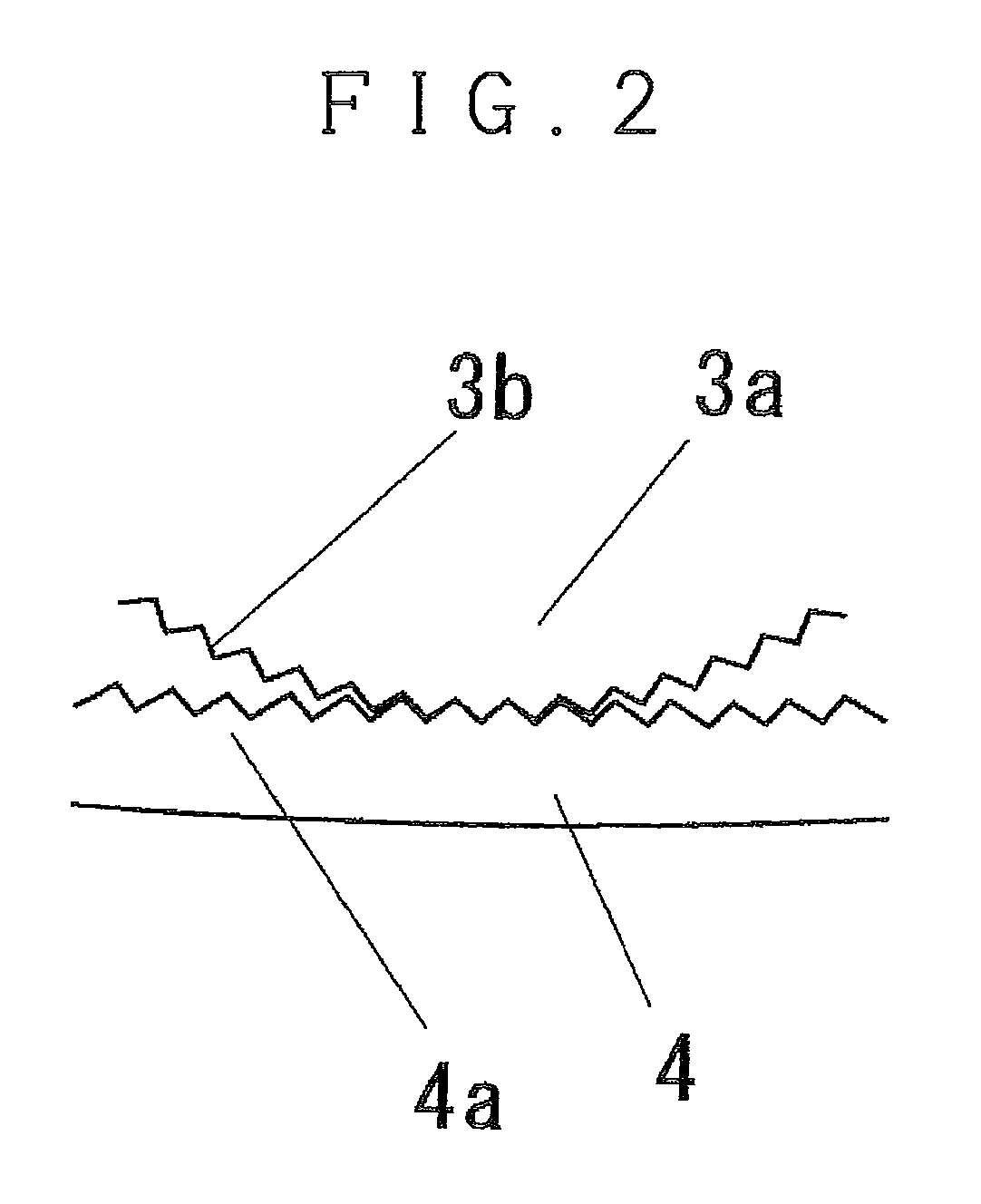Rolling device and using method thereof
a technology of rolling device and rolling element, which is applied in the direction of roller bearings, mechanical equipment, rotary machine parts, etc., can solve the problems of reducing the dimensions of rolling elements, reducing so as to reduce the frictional resistance of rolling elements in the load area, reduce the frictional resistance, and prevent the effect of rolling elements from jostling
- Summary
- Abstract
- Description
- Claims
- Application Information
AI Technical Summary
Benefits of technology
Problems solved by technology
Method used
Image
Examples
embodiment 1
[0032]A rolling device of the present invention will be described below in detail with reference to the accompanying drawings.
[0033]FIGS. 1a and 1b show a roller bearing of an embodiment of the present invention. FIG. 1a is a sectional view along line X-X in FIG. 1b. FIG. 1b is a sectional view along line Y-Y in FIG. 1a. The roller bearing includes an outer ring 1 having a transfer groove 1a, or first transfer groove 1a, on an inner side, an inner ring 2 having a transfer groove 2a, or second transfer groove 2a on an outer side, and a plurality of rollers 3 rollably inserted between the transfer grooves under a pre-load. Each of the rollers 3 is provided at opposite ends thereof with stepped portions 3a having smaller diameters and higher surface roughness in a rotating direction than the transfer groove 2a. The outer ring 1 has grooves 1b on opposite sides of the transfer groove 1a, decelerating plates 4 are fitted in the grooves, and opposite ends of the decelerating plates 4 are ...
embodiment 2
[0054]FIG. 2 is a detailed view of a contact portion between a stepped portion 3a of the roller and a decelerating plate 4 of an embodiment in the present invention and portions not shown in the figure are similar to those in FIG. 1 and not shown.
[0055]In the present embodiment, on contact faces of the pair of decelerating plates 4 with the stepped portions 3a and contact faces of the opposite stepped portions 3a with the decelerating plates 4, recessed and protruding teeth 3b and 4a to be engaged with each other are formed in a rotating direction of the rolling element.
[0056]A rotation axis of the roller is skewed with respect to a direction perpendicular to a transferring direction by a factor such as a nonuniform external load. Since a large skew angle has an adverse influence such as an increase in a frictional force, a supporting cage is conventionally used to control the skew. In the present embodiment, a revolution phase of the roller entering the contact point changing path ...
embodiment 3
[0058]FIGS. 3a to 3c show an embodiment of a barrel-shaped roller bearing of the present invention in which a contact point changing path a is provided to an inner ring. FIG. 3a is a sectional view along line X-X in FIG. 3b, FIG. 3b is a sectional view along line Y-Y in FIG. 3a, and FIG. 3c is a sectional view along line Z-Z in FIG. 3a. At a center of a barrel-shaped roller 3, an annular groove 3d having a rounded groove bottom face is formed. An outer ring 1 has a similar structure to that of the conventional art bearing. The inner ring 2 is divided into two at a center of a transfer groove 2a and an annular groove 2b is formed in a divided face. An annular decelerating plate 4 is mounted in the groove 2b by clearance fitting and a pin 5 driven in the inner ring restrains rotation of the decelerating plate 4.
[0059]An outer diameter of the decelerating plate 4 is slightly greater than a diameter of an inscribed circle at the groove bottom of the groove 3b of the roller in a state wh...
PUM
| Property | Measurement | Unit |
|---|---|---|
| radius | aaaaa | aaaaa |
| radius | aaaaa | aaaaa |
| radius | aaaaa | aaaaa |
Abstract
Description
Claims
Application Information
 Login to View More
Login to View More - R&D
- Intellectual Property
- Life Sciences
- Materials
- Tech Scout
- Unparalleled Data Quality
- Higher Quality Content
- 60% Fewer Hallucinations
Browse by: Latest US Patents, China's latest patents, Technical Efficacy Thesaurus, Application Domain, Technology Topic, Popular Technical Reports.
© 2025 PatSnap. All rights reserved.Legal|Privacy policy|Modern Slavery Act Transparency Statement|Sitemap|About US| Contact US: help@patsnap.com



